Before you write off investment in finishing kit this year, just consider what’s being introduced to fill the gaps in the market.
Finishing investment looks pretty flat. According to the 2021 Widthwise survey of domestic PSPs, few are currently looking to fork out on such kit. Perhaps most of those PSPs that really needed to did so last year, when the opportunities for diversification into PPE etc. took a hold. But that doesn’t mean technological development has come to a standstill. There are always gaps that need to be filled, and here’s what key suppliers are doing to fill them. So should you be rethinking your buying plans?
Take Zund. Like everyone else, it has noticed the impact of Covid-19 and Brexit, with an increasing number of its large-format customers looking to improve efficiency, achieve greater productivity, and deliver cost reductions via automation. But it also notes that the sector has on the whole lacked automated production solutions that could deliver end-to-end print-and-cut workflow with the use of robotics.
In response, Zund formed a technology partnership with Inca Digital to develop a fully automated print, cut and robotic offload workflow solution for the large-format print community.
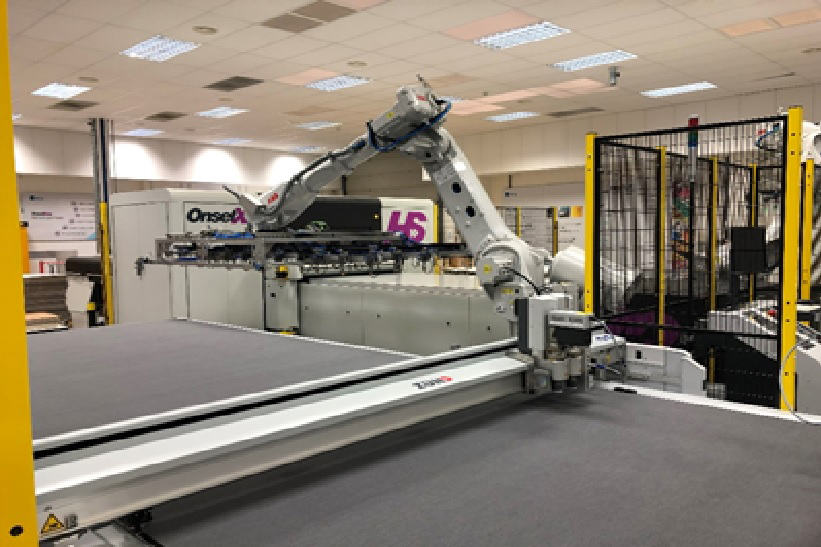
The solution allows PSPs to benefit from a complete workflow solution from pre-press automation, cloud-based set-up, print job completion and direct to cut finishing to improve efficiency, boost productivity, and increase material handling capabilities. It is based on the use of the Inca Onset X HS printer and robotics with a Zund D3 L-3200, dual beam cutting table. The Zund digital cutting system hardware is fully integrated with the Inca Onset printer using APIs.
System features include a dual robot with High 5 Double-Sided Printing capability for rigid materials - of great assistance to those with long-run production, and reducing job changeover times and the need for manual intervention between runs.
Currently, it can process sheets and corrugated board up to 3.2m in width, with a maximum weight of 5kg per 1.5 x 3m sheet.
The automated system can be tailored to requirements, and smaller footprint solutions are also available to provide a fully bespoke solution suited to each application.
The company has also released Zund Connect, which compiles production data from integrated Zund cutting systems into key performance indicators, and identifies areas in the digital cutting workflow with potential for optimisation.
The web-based monitoring tool gives the user access to cutter-performance data at a glance. The system records productivity levels over a freely definable period using Zund Cut Center (version 3.4 or later) as the data source, and supplies key performance indicators.
Zund Connect consists of multiple dashboards with specific options for evaluating data. An ‘overview’ dashboard provides past production data and indicates, for example, fluctuations in machine utilisation. The user can select various views and switch between indices for overall equipment effectiveness (OEE), availability, and capacity. In addition, a filter function can be used to compare performance across different shifts.
‘Job list’ shows a list of processed jobs, what they entailed, the time it took to produce them, and the cutting distance travelled per job. Diagrams show the time spent by each individual material/substrate, processing method, tool, and module. In reference to materials, for example, bar graphs show the processing time for each material used during a specified time frame.
A ‘loss detection’ view visualises losses in terms of time. It shows, for example, when process interruptions tend to occur most often. Loss detection enables the user to evaluate factors such as the specific time frames, materials, or tools most likely to be associated with interruptions.
‘Interruption statistics’ lists the reasons for such interruptions. The user can filter for time of day, material, method, tool, or module. The statistical representation shows the user how many hours the cutters were unable to produce during a specified period because of machine interruptions.
Zund Connect is available in a ‘Monitor’ or an ‘Analyzer’ version. As the name suggests, Monitor consists of a graphical display of overall equipment effectiveness and is available to all ZCC users for free. Analyzer provides the necessary tools for the user to be able to evaluate the production process and recommend improvements.
Stuart Fox, president, Kongsberg Precision Cutting Systems, says the pressure on the wide-format, sign, display and packaging markets “to produce faster, safer, and more efficiently, without any restrictions that limit the imagination is why Kongsberg has underlined its commitment to fusing technology and creativity to deliver the most robust and reliable digital cutting solutions.”
For creative freedom within display and POS manufacturers he points to the Kongsberg VariAngle - a single tool that cuts straight lines at any angle selection in half-degree increments and at up to 100m/min.
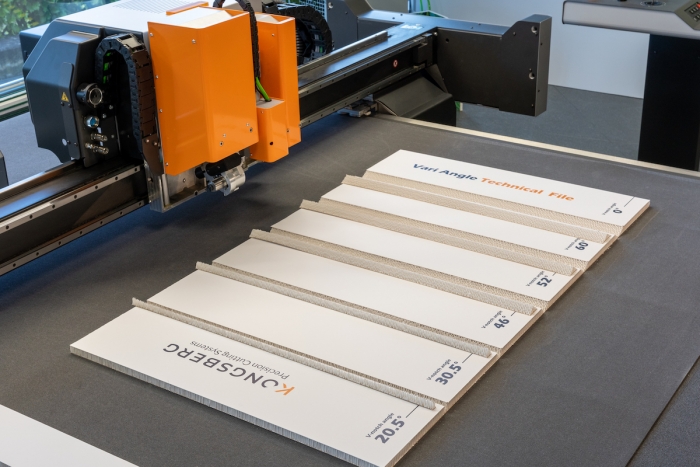
“Fitting the tool makes existing Kongsberg C and XP tables completely self-sufficient and capable of delivering almost any creative design. It enables cutting at any angle from 0o and 60o at high speeds, delivering total freedom in the design of 3D creative displays. It also completely removes the need to stop production when changing tools.
“For the first time ever, converters can make 60-degree V-notch cuts enabling the making of triangular pillars, something which has been impossible until now. It can also cut angled curves, dependent on radius size.”
Fox adds: “Importantly, the tool behaviour is defined from within the structural design software, therefore no operator input is required at the cutting table itself, boosting productivity by a further 25%.”
In June this year Kongsberg also introduced the C20, its smallest high-speed production table at 1.6m x 1.4m.
“We know that industrial manufacturers, as well as small sign and trade shops, require a high-speed cutting table to keep up with the manufacturing process, but floorspace comes at a premium. The high cost of owning or renting space is a serious problem for many in the sign and display market. With the new Kongsberg C20, there is no longer any need for those businesses to compromise on production and quality due to a lack of available space,” says Fox.
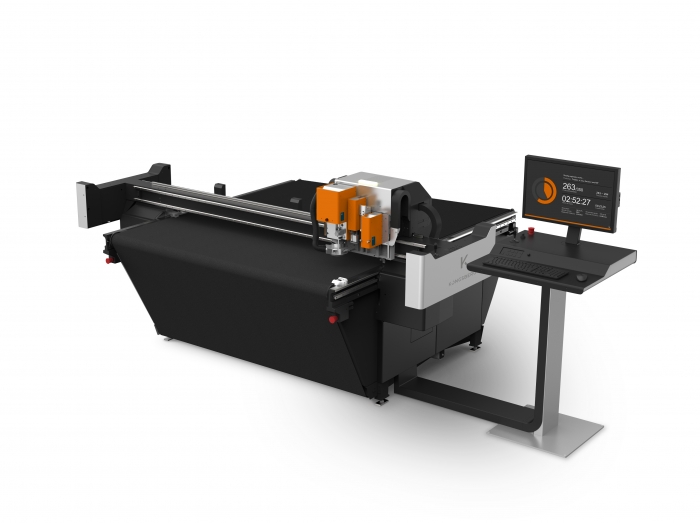
“The cutting table combines an aluminium composite tabletop, a rack and pinion drive system and dynamic table mapping. Multiple tool combinations are available during production, and the tooling system includes a material thickness probe and an optional camera for registering printed and un-printed material.”
For the soft signage market, the Kongsberg Motorized Roll Feeder is responding to what Fox sees as a need for the continuous production of high-volumes of wide-format soft signage jobs.
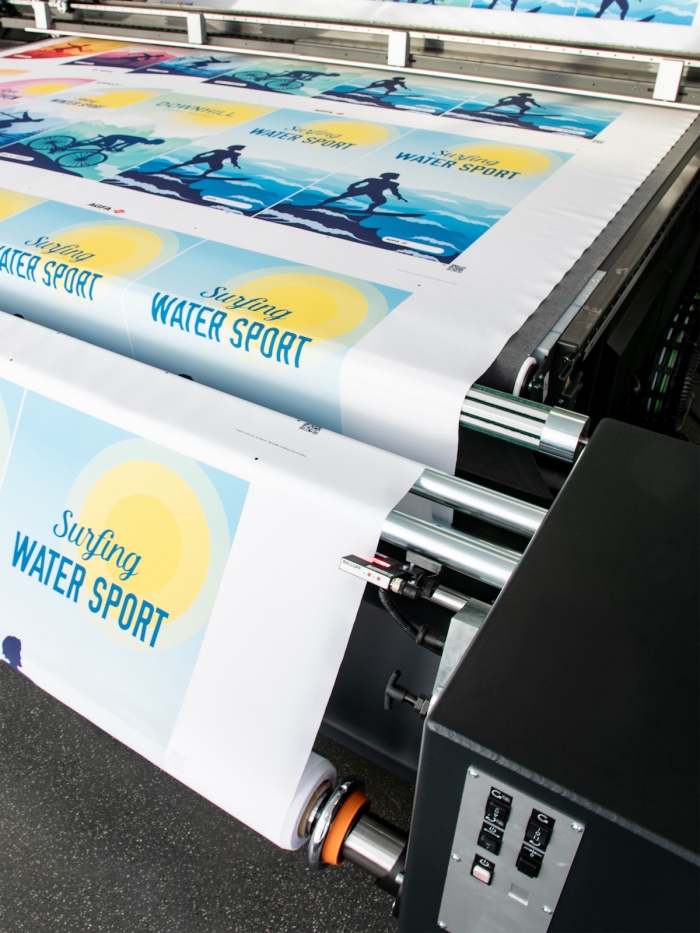
“With the Motorized Roll Feeder users can achieve the perfect final cut - even on challenging and tensile substrates,” he says. “The built-in Kongsberg iPC software compensates for any distortion, while a curve registration algorithm determines the exact cut size, taking into account all material properties for shrink, stretch or melting. Not only that, but the Motorized Roll Feeder can also handle rolls up to 300kg.
“Easy to install and operate, the Motorized Roll Feeder moves on wheels and docks to the Kongsberg cutting table with magnets. It is simple to load and very intuitive to use. It can also serve as a passive roll-off if tension control is not crucial, for example with lighter rolls and shorter print runs. When used in combination with the Kongsberg Take-Up Unit, the Motorized Roll Feeder enables true roll-to-roll production.”
CMYUK, a distributor of Klieverik heat presses in the UK/Ireland, is now selling the company’s Vertex, a hybrid transfer printing calendar launched earlier this year and aimed at those looking to expand into décor, soft furnishings, fashion, sportswear and apparel applications. An entry-level unit, it is considered a perfect companion to Epson and Mimaki printers.
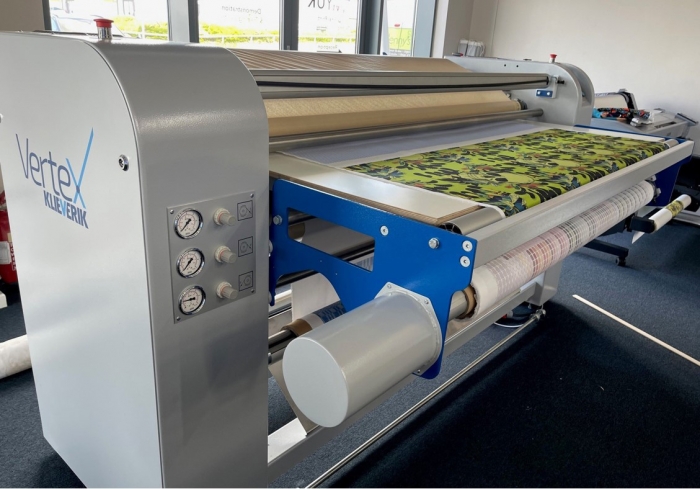
With a working width of 165cm, the Vertex calendar can handle both single pieces and roll-to-roll fabrics, and is said to be ideal for sublimating PES (polyesters). It can cope with rolls of sublimation printing or by using the infeed table single fabric pieces can also be pressed. Fabric and printed paper are tensioned controlled together via air pressure. A touchscreen pad provides easy control.
In addition to the printing of PES materials, Vertex can also be used for setting pigment inks onto natural materials such as cottons and linens for fade resistant printing.
It is also a good companion for heat fixing the DuraVibe range of soft furnishing textiles developed for use with HP Latex ink technology.
CMYUK is also a distributor of AE Sewing machines. The latest model is the ASA 2075-LS/ECO, a single needle lockstitch, direct drive sewing machine that features a mini conveyor.
Designed for staff that have no prior sewing experience, it can be used for sewing fabric and PVC textiles, thus ensuring flat seams are achieved for applications such as silicone/PVC beading, keder or SEG attaching. The conveyor features a 0.75m wide by 2m length, tactile lined blue PVC belt and is specially developed for the transportation of fabric while the sewing operation is in motion.

